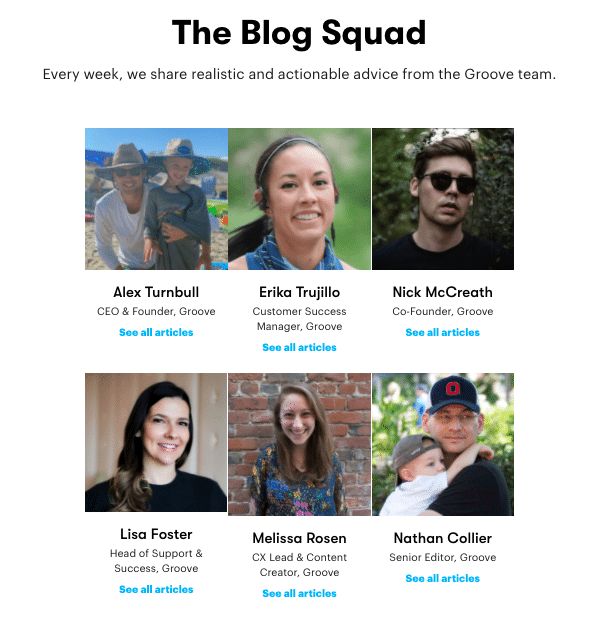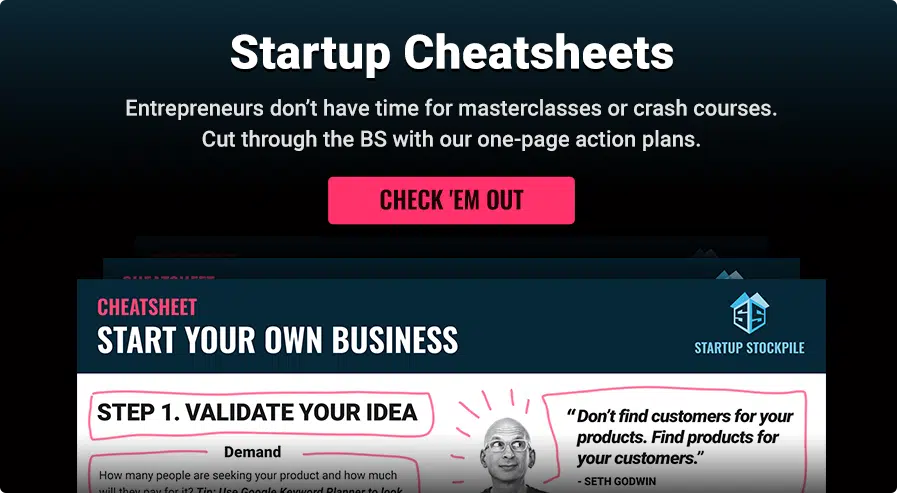Struggling to create quality content but do not have the budget to hire a writer, freelancer, or agency?
Your employees and coworkers can save the day.
In fact, with a little coaching, you can turn them into content-creating superheroes.
Your company’s employees are the ones who:
- Know your product inside and out.
- Understand your customers’ most pressing pain points.
- Have a wealth of diverse expertise that can be used to create compelling content.
- Are trusted influencers, friends, and family to hundreds of potential customers.
What they may lack in writing experience and skill, they make up with industry expertise and authenticity. And that’s what builds trust with readers and turns them into loyal customers.
A recent study found 90% of consumers say they value authenticity when deciding which brands to support.
So, let’s rally your employees and supercharge your marketing efforts.
7 Steps To Create Employee-Generated Content
Employee-generated content, meaning blogs, infographics, podcasts, and videos your workforce creates, can increase consumer engagement and play a big part in increasing conversion rates.
Employees sharing content with their networks expand your brand’s reach and expose more people to your company, product or service, website, and other platforms.
I’m not telling you to publish everything an employee writes or pitches you. I’m also not saying you should mandate that your entire workforce becomes content creators overnight.
You need a strategy.
Here are some actionable steps you can take to get the ball rolling.
Step 1. Create An Employee Content Development Process
Ensure success for employee content creators by setting up guidelines.
✓ Give Them Ways To Submit Ideas
Maybe you can create a new work email address to collect ideas. Or, you can use an online form like Google Forms for idea submissions.
✓ Describe What You’re Looking For
Explain the various content types that can be submitted and appropriate themes for coverage. Offer links to tutorials for further education.
✓ Update Your Style Guide
Educate employees on your marketing guidelines with a style guide.
Include a primer on the tone of voice, words to avoid, and language that exemplifies your brand. This will help to make employee-generated content consistent with your overall strategy.
It’ll also save you time in editing.
Upload guidelines, content marketing tools, and training materials for easy access on a shared drive.
Enlist a point of contact where employees can direct questions.
Update content guidelines regularly based on your feedback on the process.
Step 2. Identify Employee Advocates
Ask your social media team to identify employees who like, comment on, and share your company’s social media updates with their channels.
They might be willing to become content creators since they’re already enthusiastic about your company’s content.
Also, look for employees who create their content separately from company time.
Maybe you have coworkers who run personal blogs or have a notable Instagram following.
These in-house influencers already know what they’re doing, making it easier to transition them to creating branded content for your business.
Step 3. Invite Employees To Contribute
Anyone on your team can become a content creator, even without experience. Each one provides a unique point-of-view and insight into your company culture.
A few content marketing basics to share with your coworkers include blog and design templates, making it easier to create articles that relate to your brand.
Your content team can also conduct training for interested employees through lunch and learns, and you can set up a mentoring program where a content team member is paired with a coworker to help improve their writing skills.
A study done by LinkedIn found over 90% of employees would stay at a company longer if continued education were offered.
People want to learn.
You can also open brainstorming meetings to all employees to attract more employee talent.
What’s a real-life example?
The help desk software company Groove.
And they’re absolutely killing it with amazing employee-generated content.

At Groove, content marketing through storytelling is a way of life.
Every employee contributes.
Step 4. Use an Internal Communication Hub
Make it easy for employees to get involved by using an internal communications hub, like an employee-focused social network. Team collaboration tools like Yammer or Smarp can be used for:
- Soliciting ideas from employees
- Enabling employees to post issues they’re hearing from leads and customers
- Sharing industry news and expertise that can inspire ideas
- Sharing where competitors are finding success
You can also use the hub to post links to the employee-made content you publish, increasing visibility, recognizing employees, and giving everyone something to share with their networks.
Step 5. Turn Events Into Content Opportunities
Team events are good places to enlist employees as reporters for your company. Before an event like a conference, team-building outing, or community service drive, ask if anyone is interested in covering the event for your digital outlets.
These events can get new employees involved with content creation, and this coverage can give your online audience further insight into your company.
Step 6. Feature Your Company’s Tech Experts
The technical experts at your company are the most trustworthy sources of information, according to the Edelman Trust Barometer Global Report.
Nearly two-thirds (65%) of people rate company technical experts as very/extremely credible. Compare that to 47% of people rated CEOs as very/extremely credible.
Your technical experts may not be inclined to write articles or make infographics, but you can still feature them in your content.
Have your marketing pro interview them and ghostwrite a blog using their byline. Or, have someone at your company do a Q&A with them for a video or podcast. This will build trust and authority with your audience.
Step 7. Spotlight Employee Content
To show coworkers their work is meaningful, share their content on your company’s social media channels and in digital marketing channels like email newsletters. This entire process brings more exposure to their brand, which can also benefit them.
Recognize employee content creators in all-team meetings and internal communications, like company-wide newsletters. Share a snippet of their work and a link with a CTA for other employees to share.
Consider rewarding employees whose content performs significantly well for your company.
For example, if one employee blog has brought you a meaningful number of leads, recognize the employee with an award at your next team meeting. Rewards and recognition can motivate your new content creators to increase the quality of what they’re submitting.
Measure, Optimize, Repeat
Make sure you measure and optimize your employee-generated content strategy.
And continually track metrics to suggest better content ideas to employees and amplify your best employee content creators’ efforts.
Make Sure To track:
✓ Qualified Leads
Which pieces generate leads, and what sales funnel stage are they in?
✓ Conversions
Which pieces are leading to conversions?
✓ Referrals
Look at what pieces are being linked to on other credible sites. Which ones are increasing referrals for your business?
✓ Engagement
Which forms of content get lots of buzz and shares on social media? If you enable comments on posts, which employee posts generate discussions?
✓ Bounce Rate
Notice if some articles are getting page views but little engagement. A high bounce rate may indicate the employee has substantial reach, but the content should be tweaked to maintain interest.
✓ Click-Through Rate
Look at the content that is spurring engagement throughout your website. Apply best practices for linking and CTA placement to keep audiences engaged.
You might share insights like these with your whole team by uploading them online or featuring them in a staff meeting.
Highlight successes so more current and would-be employee content creators understand what’s working.
Make these efforts collaborative so employees can make their next video, blog, case study, email campaign, or infographic a success.

Editor’s Note: This article is part of the blog series Run Your Business brought to you by the marketing team at Unitel, the virtual phone system priced and designed for startups and small business owners.





